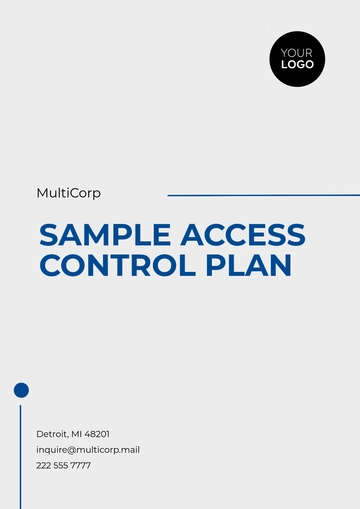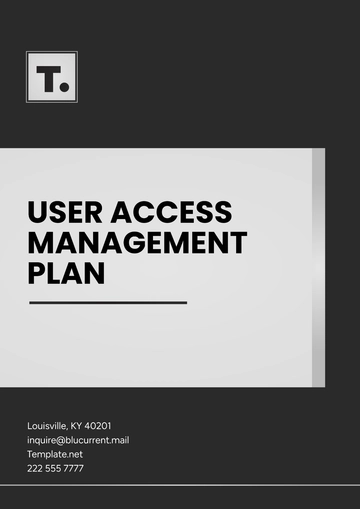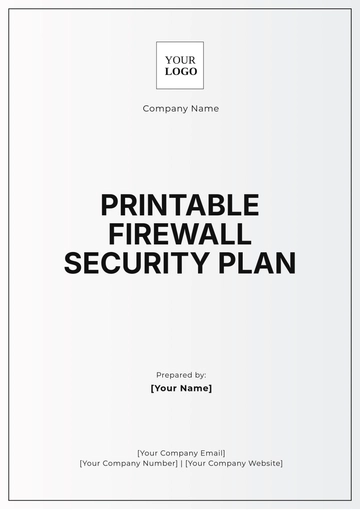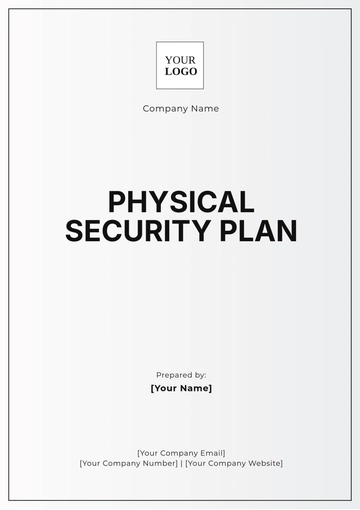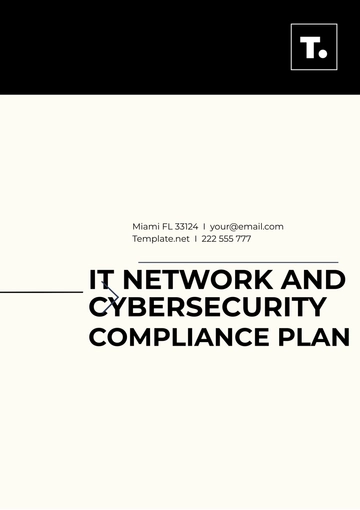Free Physical Security Plan
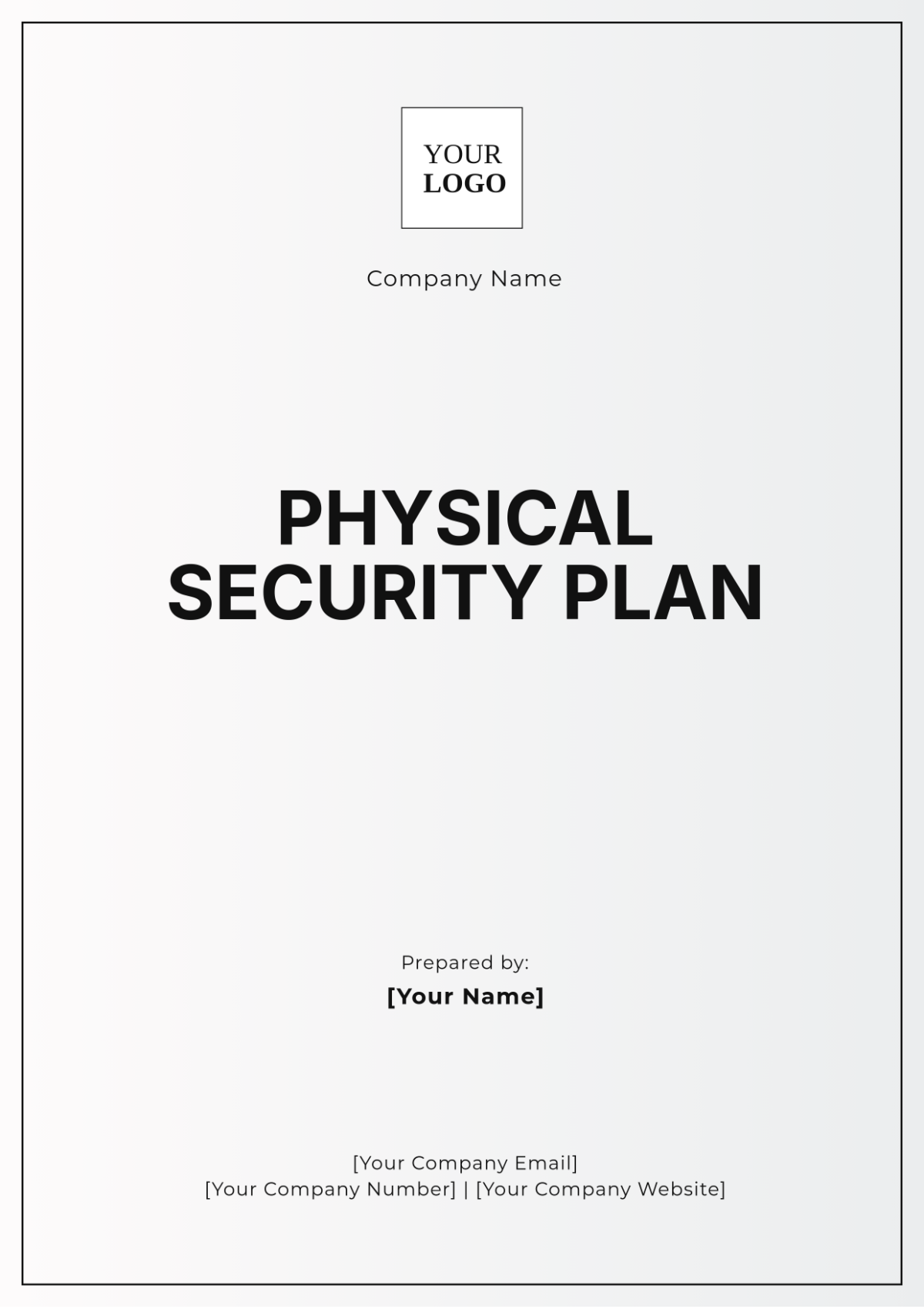
I. Introduction
Physical security is a fundamental component in safeguarding an organization’s assets, personnel, and infrastructure. In today’s environment, where threats can range from natural disasters to targeted attacks, a comprehensive physical security plan is essential for ensuring safety and resilience. This plan outlines the key components, strategies, and measures required to establish a robust physical security framework tailored to the unique needs of the organization.
II. Security Assessment
1.1 Risk Analysis
Conduct a thorough risk analysis to identify potential threats, vulnerabilities, and their associated risks to the organization. This assessment should include:
Natural Disasters: Evaluate risks related to floods, earthquakes, fires, and severe weather conditions. Consider geographical location and historical data to inform this assessment.
Unauthorized Access: Analyze the likelihood of intrusions, theft, or vandalism and identify weak points in the current security measures.
Sabotage and Terrorism: Investigate threats from disgruntled employees or external groups that may target the organization intentionally.
Utilize tools such as threat matrices and risk scoring systems to quantify and prioritize risks effectively.
1.2 Asset Identification
Identify and evaluate all physical and personnel assets requiring protection. This includes:
Buildings: Assess the security needs of all facilities, including offices, warehouses, and data centers.
Equipment: Catalog all critical equipment, including computers, machinery, and vehicles, to determine their value and importance to operations.
Documents: Secure sensitive documents, intellectual property, and data by assessing current storage methods and access controls.
Human Resources: Identify key personnel whose safety is paramount, including executives, employees in sensitive positions, and contractors.
Develop a comprehensive asset register that includes the location, value, and specific security requirements for each asset.
III. Security Measures
2.1 Perimeter Security
Implement physical barriers and deterrents to protect the organization’s perimeter:
Installation of Fences, Walls, and Barriers: Erect robust fencing and barriers that deter unauthorized access and define property boundaries.
Security Lighting and Signage: Install adequate lighting to enhance visibility during nighttime hours and display clear signage to indicate restricted areas.
Surveillance cameras: deploy high-resolution cameras with night vision capabilities to monitor critical areas continuously. Integrate video analytics for proactive threat detection.
2.2 Access Control
Establish stringent access control measures to regulate entry into the organization:
Controlled Entry Points with ID Verification: Designate specific entry points and equip them with security personnel to check identification and validate access.
Employee and Visitor Badges: Implement a badge system for employees and visitors to ensure only authorized individuals are on-site. Consider color-coded badges for easy identification.
Biometric Identification Systems: Utilize biometric technologies such as fingerprint scanners or facial recognition systems to enhance security at high-risk access points.
2.3 Intrusion Detection Systems
Utilize advanced technology to detect unauthorized access:
Alarm Systems with Monitoring: Install alarms that trigger notifications to security personnel or law enforcement in the event of unauthorized entry.
Motion Detectors: Utilize passive infrared or microwave motion sensors in strategic locations to detect movement.
Glass Break Detectors: Equip windows with sensors that detect the sound of breaking glass, triggering alarms and notifications.
IV. Emergency Response
3.1 Emergency Procedures
Develop comprehensive emergency procedures that outline protocols for various scenarios.
Evacuation Plans: Create clear evacuation routes and assembly points for all personnel.
Lockdown procedures: Establish protocols for securing the facility during a threat, including communication strategies for alerting employees.
Communication Protocols: Define methods for internal and external communication during emergencies, ensuring timely information dissemination.
3.2 Training and Drills
Conduct regular training sessions and drills to ensure all staff are familiar with emergency protocols.
Frequency and Types of Drills: Schedule drills for different scenarios, including fire evacuations, lockdowns, and active shooter situations.
Feedback and Improvement: Gather feedback from participants after drills to identify areas for improvement and refine procedures accordingly.
V. Monitoring and Maintenance
4.1 Regular Inspections
Schedule routine inspections of security systems and infrastructure to ensure optimal functionality.
Checklists and Documentation: Develop checklists for inspections and maintain records to track system performance and issues over time.
System Upgrades: Regularly assess the need for updates or upgrades to security technology to keep pace with emerging threats.
4.2 Review and Updates
Periodically review and update the security plan to adapt to new threats and technologies:
Annual Reviews: Conduct a comprehensive review of the security plan at least once a year, considering changes in the organization’s structure, operations, and external threat landscape.
Stakeholder Involvement: Involve key stakeholders in the review process to ensure all perspectives are considered and integrated into the plan.
- 100% Customizable, free editor
- Access 1 Million+ Templates, photo’s & graphics
- Download or share as a template
- Click and replace photos, graphics, text, backgrounds
- Resize, crop, AI write & more
- Access advanced editor
Enhance your organization's security measures with the customizable Physical Security Plan Template offered by Template.net. This downloadable and printable template is designed to help you create a comprehensive plan to protect your physical assets. It's fully editable in our AI Editor Tool, allowing you to easily tailor it to meet specific needs. Ensure top-notch security today!
You may also like
- Finance Plan
- Construction Plan
- Sales Plan
- Development Plan
- Career Plan
- Budget Plan
- HR Plan
- Education Plan
- Transition Plan
- Work Plan
- Training Plan
- Communication Plan
- Operation Plan
- Health And Safety Plan
- Strategy Plan
- Professional Development Plan
- Advertising Plan
- Risk Management Plan
- Restaurant Plan
- School Plan
- Nursing Home Patient Care Plan
- Nursing Care Plan
- Plan Event
- Startup Plan
- Social Media Plan
- Staffing Plan
- Annual Plan
- Content Plan
- Payment Plan
- Implementation Plan
- Hotel Plan
- Workout Plan
- Accounting Plan
- Campaign Plan
- Essay Plan
- 30 60 90 Day Plan
- Research Plan
- Recruitment Plan
- 90 Day Plan
- Quarterly Plan
- Emergency Plan
- 5 Year Plan
- Gym Plan
- Personal Plan
- IT and Software Plan
- Treatment Plan
- Real Estate Plan
- Law Firm Plan
- Healthcare Plan
- Improvement Plan
- Media Plan
- 5 Year Business Plan
- Learning Plan
- Marketing Campaign Plan
- Travel Agency Plan
- Cleaning Services Plan
- Interior Design Plan
- Performance Plan
- PR Plan
- Birth Plan
- Life Plan
- SEO Plan
- Disaster Recovery Plan
- Continuity Plan
- Launch Plan
- Legal Plan
- Behavior Plan
- Performance Improvement Plan
- Salon Plan
- Security Plan
- Security Management Plan
- Employee Development Plan
- Quality Plan
- Service Improvement Plan
- Growth Plan
- Incident Response Plan
- Basketball Plan
- Emergency Action Plan
- Product Launch Plan
- Spa Plan
- Employee Training Plan
- Data Analysis Plan
- Employee Action Plan
- Territory Plan
- Audit Plan
- Classroom Plan
- Activity Plan
- Parenting Plan
- Care Plan
- Project Execution Plan
- Exercise Plan
- Internship Plan
- Software Development Plan
- Continuous Improvement Plan
- Leave Plan
- 90 Day Sales Plan
- Advertising Agency Plan
- Employee Transition Plan
- Smart Action Plan
- Workplace Safety Plan
- Behavior Change Plan
- Contingency Plan
- Continuity of Operations Plan
- Health Plan
- Quality Control Plan
- Self Plan
- Sports Development Plan
- Change Management Plan
- Ecommerce Plan
- Personal Financial Plan
- Process Improvement Plan
- 30-60-90 Day Sales Plan
- Crisis Management Plan
- Engagement Plan
- Execution Plan
- Pandemic Plan
- Quality Assurance Plan
- Service Continuity Plan
- Agile Project Plan
- Fundraising Plan
- Job Transition Plan
- Asset Maintenance Plan
- Maintenance Plan
- Software Test Plan
- Staff Training and Development Plan
- 3 Year Plan
- Brand Activation Plan
- Release Plan
- Resource Plan
- Risk Mitigation Plan
- Teacher Plan
- 30 60 90 Day Plan for New Manager
- Food Safety Plan
- Food Truck Plan
- Hiring Plan
- Quality Management Plan
- Wellness Plan
- Behavior Intervention Plan
- Bonus Plan
- Investment Plan
- Maternity Leave Plan
- Pandemic Response Plan
- Succession Planning
- Coaching Plan
- Configuration Management Plan
- Remote Work Plan
- Self Care Plan
- Teaching Plan
- 100-Day Plan
- HACCP Plan
- Student Plan
- Sustainability Plan
- 30 60 90 Day Plan for Interview
- Access Plan
- Site Specific Safety Plan

